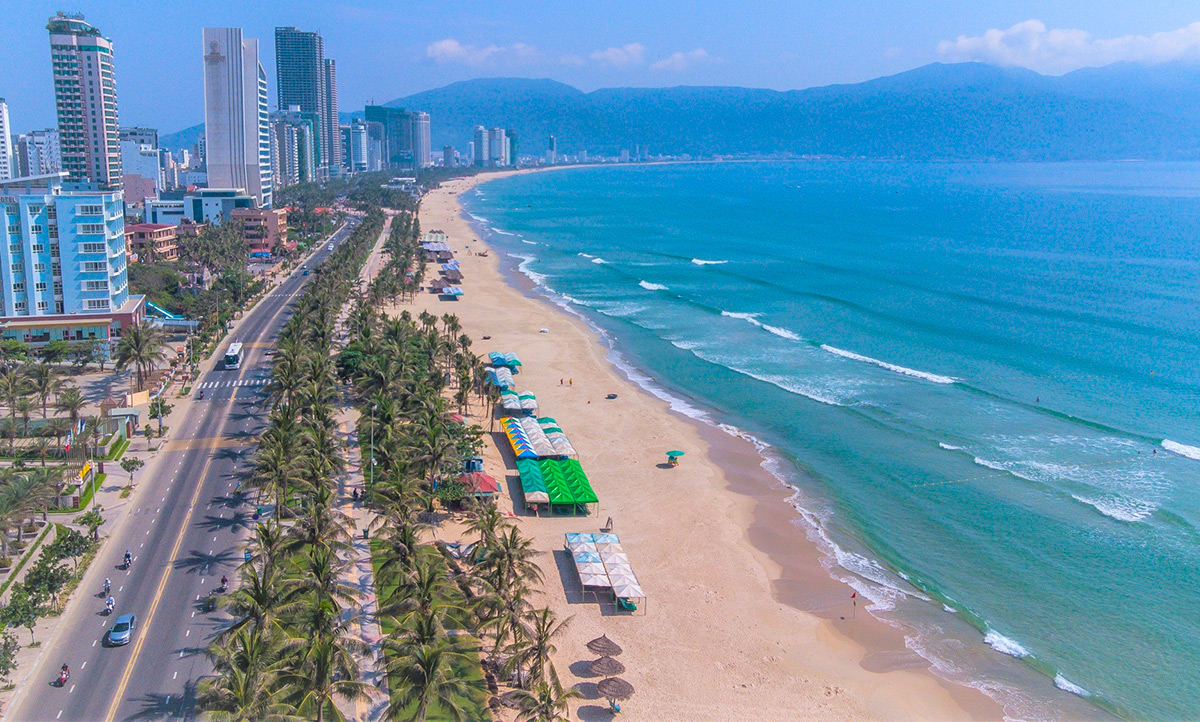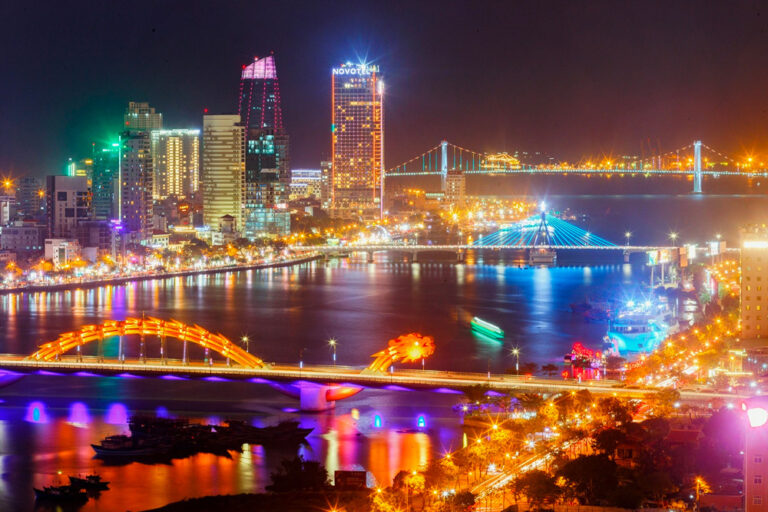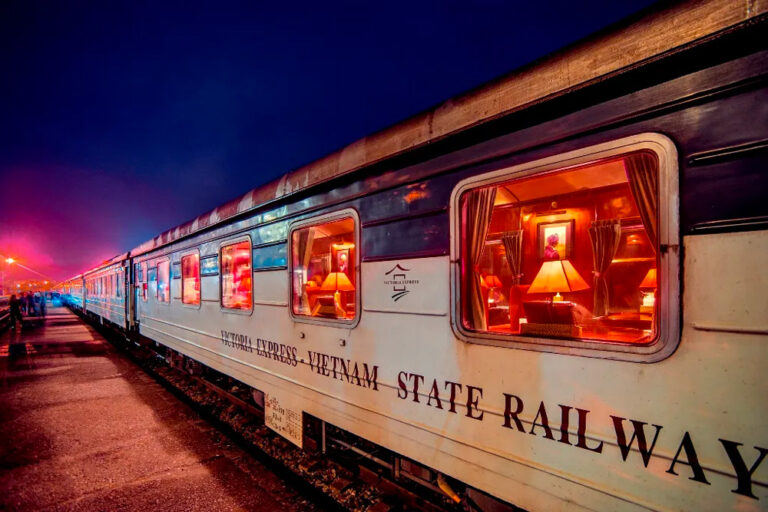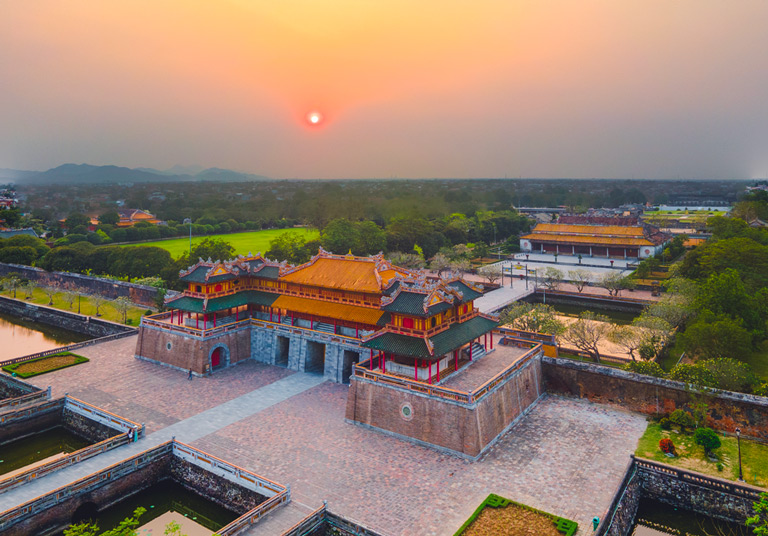Da Nang in 3 Days | Best Things to Do & See
I’ve been living in Hoi An for quite a while now, and let me tell you, I never get tired of this region. Between the charming alleys of the old town, An Bang beach, and the delicious local cuisine, I’m truly spoiled.
But whenever I feel like exploring and experiencing the vibe of a bustling coastal city, I hit the road to Da Nang. This ultra-dynamic city (the third largest in Vietnam) is just about 30 kilometers from Hoi An, yet the contrast is striking: wide boulevards, bridges illuminated at night, and sprawling beaches. You can instantly feel the energy! If you’re looking to discover another side of Central Vietnam, Da Nang is absolutely worth the trip.
Why Spend 3 Days in Da Nang?
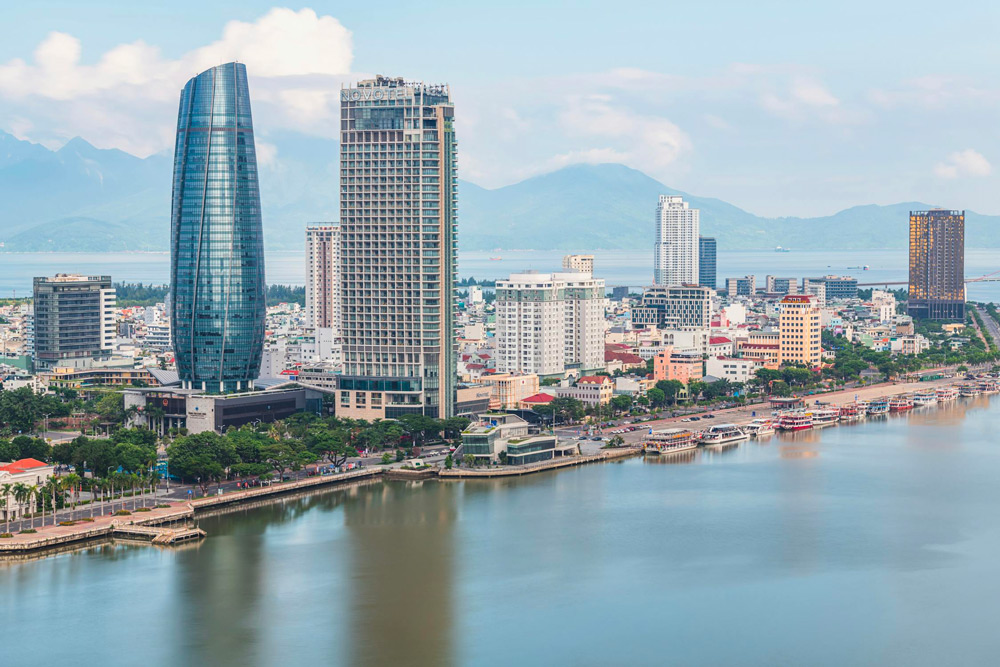
Three days seem perfect for a first introduction to Da Nang. Yes, you could do a day trip from Hoi An (buses and taxis are convenient), but you’d risk missing out on so much. Da Nang offers several must-see attractions, such as the Marble Mountains, Ba Na Hills with its famous giant hands (the Golden Bridge), or the Cham Sculpture Museum for culture enthusiasts. Add to that the long white sandy beaches and iconic bridges like the Dragon Bridge, and it’s easy to see why a one-day sprint wouldn’t suffice.
In three days, you can soak up the urban vibe, taste street food, venture into the surrounding nature, and even take the time to explore quieter neighborhoods off the beaten path. And of course, if you feel like returning to Hoi An in the evening to relax, it’s never too far away. In short, it’s the perfect compromise to fully enjoy everything the region has to offer.
Getting Around in Da Nang
If you’re staying in Da Nang for a few days, you’ll find it’s incredibly easy to get around, even if you’re unfamiliar with the city. As in most of Vietnam, motorbikes dominate, but they’re far from the only option:
• Walking: Da Nang’s city center is relatively compact, especially around the Han River and Bach Dang Street, with its pleasant promenades and illuminated bridges. It’s easy to explore this area on foot while enjoying the relaxed atmosphere, modern architecture, cafes, and local markets.
• Taxi and Private Car: For longer distances or if you’re not comfortable riding a motorbike, taxis are a reliable option. The average fare is around 15,000 VND per kilometer, and you’ll always find a taxi near tourist spots. If you’ve planned a busy day visiting places like the Marble Mountains or Ba Na Hills, renting a private car in Da Nang can be practical and cost-effective, especially if you’re traveling in a group.
• Motorbike: The most common way to get around in Vietnam is by motorbike. You can rent one for a day for about 100,000 to 200,000 VND. This gives you total freedom to go wherever you want, whenever you want-perfect for exploring the Son Tra Peninsula at your own pace. Just be cautious during peak hours (early morning and late afternoon) if you’re not yet comfortable with Vietnam’s traffic.
• Bicycle: For shorter trips or to enjoy the coastal breeze, cycling is an excellent choice. The boulevards and roads along the river or sea are well-maintained and safe, making it easy to pedal around. If you’re up for a challenge, cycling to the Son Tra Peninsula offers stunning coastal views-just be prepared for some steep climbs!
• Bus: Da Nang has a network of public buses covering the city’s main routes with fixed schedules. For more information, check out danangbus.vn for routes, stops, and fares. There are also hop-on, hop-off tourist buses, which are a convenient way to quickly see Da Nang’s major attractions without worrying about driving or parking.
Day 1: Discovering the Highlights of Da Nang
Arriving in Da Nang from Hoi An feels like stepping into a whole new world. You leave behind the peaceful charm of an ancient town and enter a vibrant coastal city, buzzing with energy and modernity. For this first day, I suggest an itinerary that blends nature, culture, and gastronomy, giving you a true taste of Da Nang’s essence.
Marble Mountains
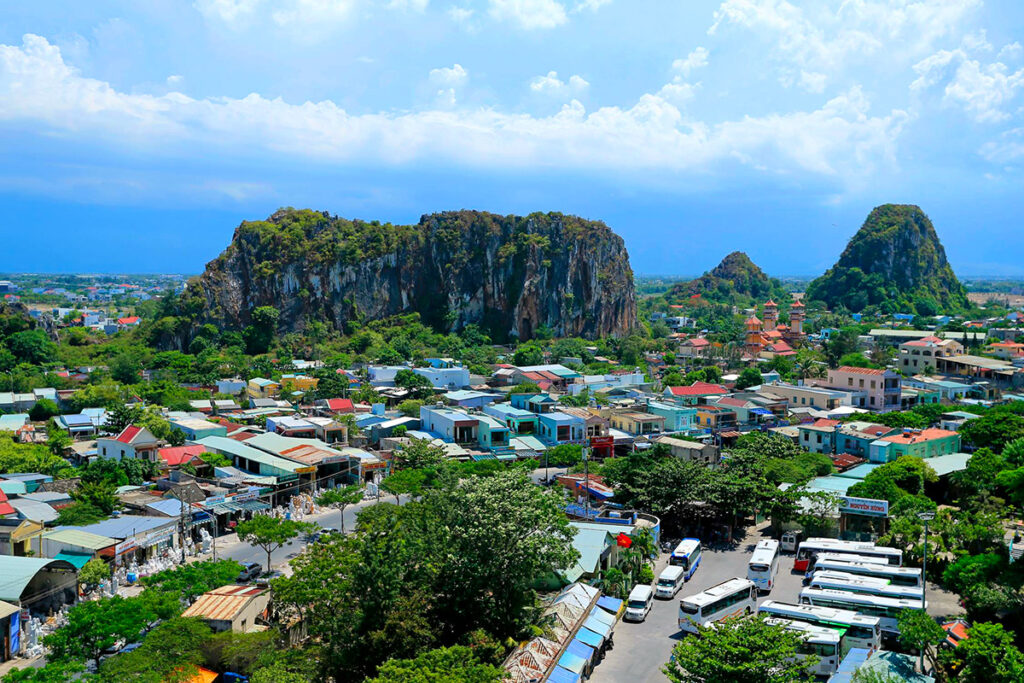
The Marble Mountains (Ngu Hanh Son in Vietnamese) are a cluster of five limestone hills that rise dramatically from the flat landscape, drawing attention as you approach. At the top, you’ll find ancient pagodas, fascinating caves, and stunning panoramic views of the city and coastline. It’s one of my favorite spots in Da Nang.
I recommend visiting early in the morning to avoid the heat, as there are quite a few steps to climb-but trust me, it’s worth the effort. On your way back, take a moment to explore the stone-carving workshops at the base of the mountains, a craft that has been preserved since the 16th century.
I have a complete guide to the Marble Mountains for more details.
Essential Information
- Opening Hours: 7 AM – 5 PM
- Entry Fee: 40,000 VND per person
Linh Ung Pagoda and Lady Buddha
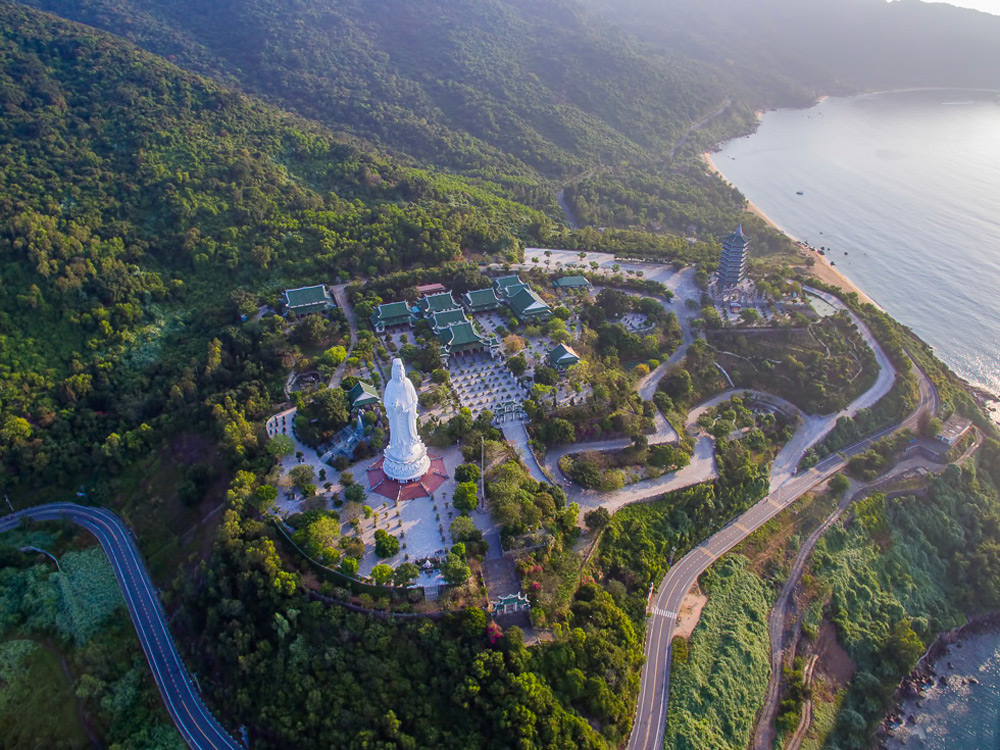
As you head north along the coast, you can’t miss the towering 67-meter Lady Buddha statue, visible even from the beaches of Da Nang. Known to locals as a protector against storms and a symbol of luck and prosperity, this statue is part of the Linh Ung Pagoda, the largest in Da Nang.
Surrounded by stunning temples and breathtaking views of the sea, the area exudes a serene spiritual atmosphere. Take your time to walk around, admire the bonsai gardens, and soak in the peaceful vibes of this sacred site.
Option: Exploring the Son Tra Peninsula
Beyond visiting the pagoda and the Lady Buddha statue, the Son Tra Peninsula is ideal for a half-day or full-day road trip. Whether by car or motorbike, you can circle the peninsula, stopping at scenic viewpoints that offer sweeping views of the city, beaches, and lush forest.
The peninsula is home to diverse wildlife, including the rare red-shanked douc langur, a beautifully colored monkey often referred to as the “Queen of Primates.” Some visitors choose to stop near the Intercontinental Da Nang, where monkeys often gather, while others opt for a full loop around the peninsula to enjoy its untouched natural beauty.
If you’re looking for a tranquil escape from the urban buzz, this is the perfect way to experience the wilder side of Da Nang. You’ll also have the Lady Buddha watching over you from her perch on the hillside.
Beach Break: My Khe
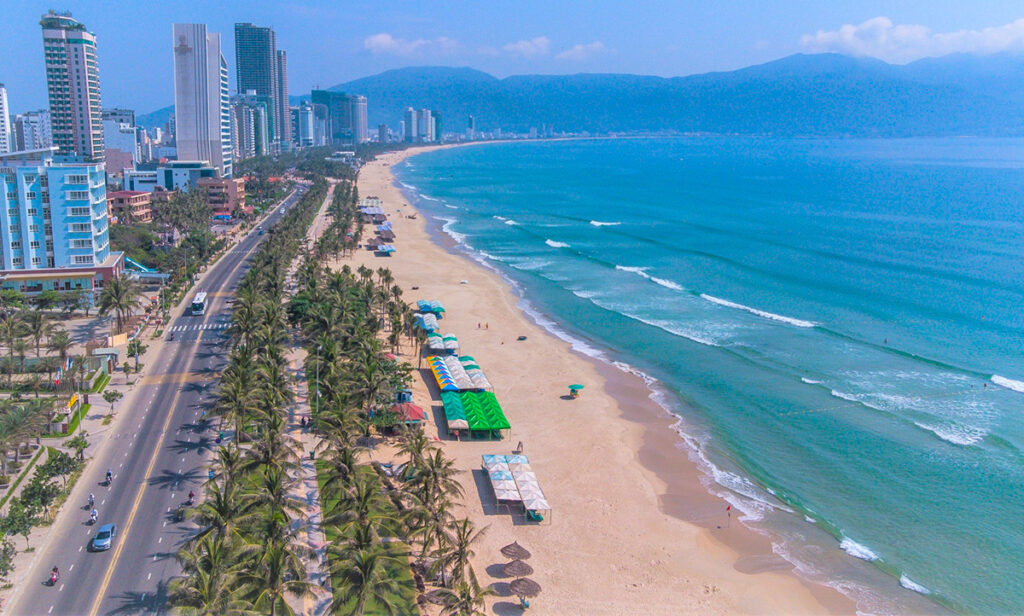
On your way back to the city center, take a moment to stop at My Khe Beach, ranked among the most beautiful beaches in the world by Forbes. With its long stretch of fine white sand, clear waters, and swaying coconut trees, it exudes a tropical vacation vibe. If you have your swimsuit handy, go ahead and take a refreshing dip. Otherwise, a simple barefoot walk along the shoreline is enough to rejuvenate you after climbing the Marble Mountains and visiting Lady Buddha.
Lunch: Da Nang’s Local Delights
For me, discovering a Vietnamese city is incomplete without savoring its local cuisine, and Da Nang offers a particularly rich gastronomic scene. Here are some of my favorite dishes to try:
- Mi Quang: Rice noodles served with shrimp, pork, and fresh herbs in a lightly spiced broth.
- Bun Cha Ca: A flavorful fish noodle soup, often enhanced with spices and fresh vegetables.
- Banh Xeo: Crispy rice flour crepes stuffed with shrimp, pork, and bean sprouts, best enjoyed dipped in sweet-and-sour fish sauce (nuoc mam).
Many restaurants in the city serve these specialties. If you’re unsure where to go, check out popular local spots like Mi Quang Ba Mua or Dac San Tran, where you can sample a variety of dishes all in one place.
This combination of sun, sand, and vibrant flavors makes for the perfect midday recharge before continuing your exploration of Da Nang.
Afternoon: My Son Sanctuary
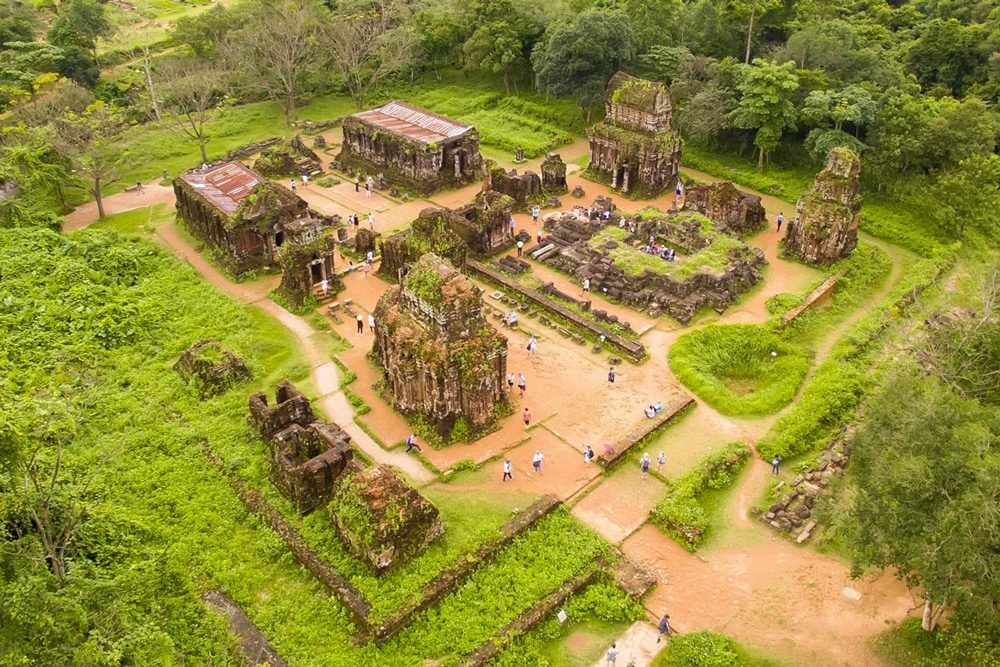
After lunch, head to the My Son Sanctuary, a UNESCO World Heritage Site. Located about an hour’s drive away, this complex of Hindu temples nestled in the jungle was once one of the main religious centers of the Champa Kingdom.
As you wander among the red-brick towers and intricately carved ruins, you’ll be transported into the fascinating history of this lost civilization. Be sure to bring enough water and a hat to shield yourself from the heat. If you want to delve deeper into the Cham symbols and legends, consider hiring a local guide to enrich your experience.
Essential Information
- Hours: 6 AM – 5 PM
- Price: 150,000 VND per person
Option: Cham Sculpture Museum
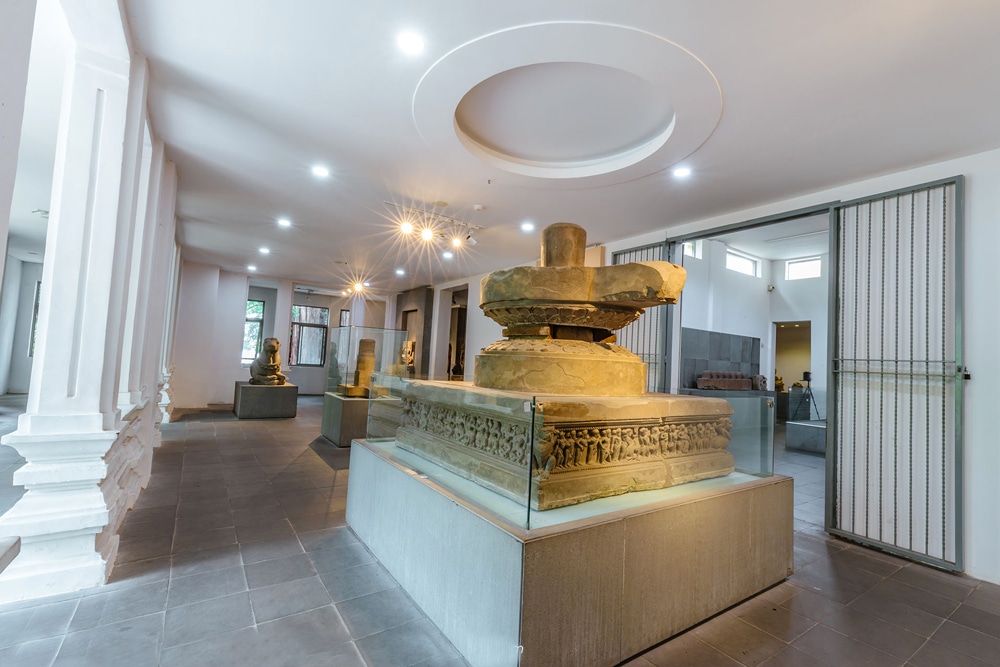
If you have time in the late afternoon or wish to deepen your knowledge of Cham art after visiting My Son, consider stopping by the Cham Sculpture Museum, Da Nang’s number-one museum. Located near the Dragon Bridge, it houses the world’s largest collection of Cham artifacts, making it an excellent complement to your archaeological excursion.
Essential Information
- Hours: 7:30 AM – 11 AM and 1 PM – 5 PM
- Price: 60,000 VND per person
Dinner: Fresh Seafood and Local Vibes
Back in Da Nang, treat yourself to a delicious dinner featuring fresh seafood. The city is renowned for its seaside restaurants, and choosing one frequented by locals often guarantees authenticity and better prices. You can pick your fish or shellfish directly from the tanks and even request how you’d like it cooked-a personalized culinary experience that’s hard to beat.
Most Vietnamese locals pair their meal with a Larue beer, often served with ice. While it might sound unusual, it’s a refreshing tradition that’s perfect for hot evenings.
Evening: Han River Cruise or Dragon Bridge Show
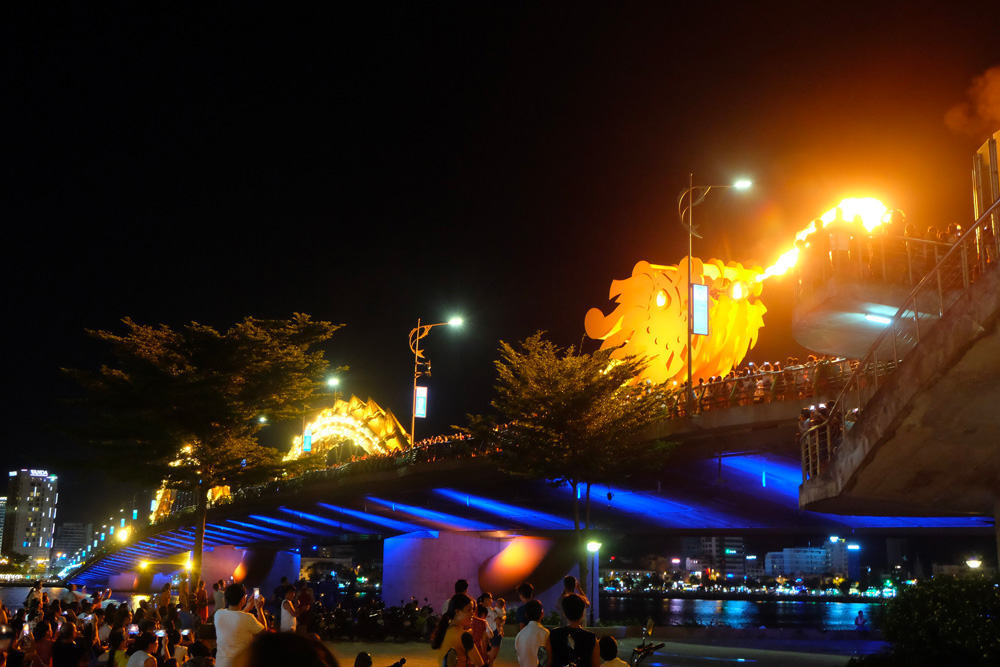
• Han River Cruise: Take a relaxing boat ride along the Han River to admire Da Nang’s illuminated bridges and vibrant waterfront at night. The atmosphere is both romantic and festive, particularly during the International Fireworks Festival, when boats fill up quickly, so booking in advance is a smart move.
• Dragon Bridge Show: If you’re in town on a weekend (Friday, Saturday, or Sunday), don’t miss the iconic Dragon Bridge’s fire and water show at 9 PM. The lively atmosphere is fun for all ages, and you can enjoy it from a nearby café for a comfortable and dry view.
• Son Tra Night Market: Located at the base of the Dragon Bridge, the Son Tra Night Market is one of Da Nang’s most popular spots for exploring local food and culture after dark. Stroll through the bustling market, sample various street food delicacies, and soak up the lively atmosphere-it’s an ideal way to end your day.
Day 2: A Journey to Hoi An’s Old Town (A UNESCO World Heritage Site)
After exploring Da Nang’s highlights on Day 1, it’s time to visit the unmissable Hoi An! This gem of Central Vietnam, recognized as a UNESCO World Heritage Site, is just 30 kilometers away from Da Nang. Spend the day wandering its historic alleys, marveling at its architecture, indulging in its cuisine, and soaking up the glow of its famous lanterns.
Getting from Da Nang to Hoi An
- Private Car or Taxi: Quick and comfortable, this option costs around 250,000 to 270,000 VND for a one-way trip (possibly more depending on the season). Ideal for groups or travelers with lots of luggage.
- Motorbike: Perfect for those who enjoy the freedom of scenic routes. Rentals cost between 100,000 and 200,000 VND per day. Be cautious of traffic, especially during rush hours in the early morning and late afternoon.
- Bus: The cheapest option at just 70,000 VND per person. Buses depart regularly from Da Nang’s central station and drop you in the heart of Hoi An in about 45 minutes.
Tip: If you’re staying late in Hoi An for its lanterns or night market, check the schedule for the last return bus, or plan to stay overnight.
Exploring Hoi An’s Old Town
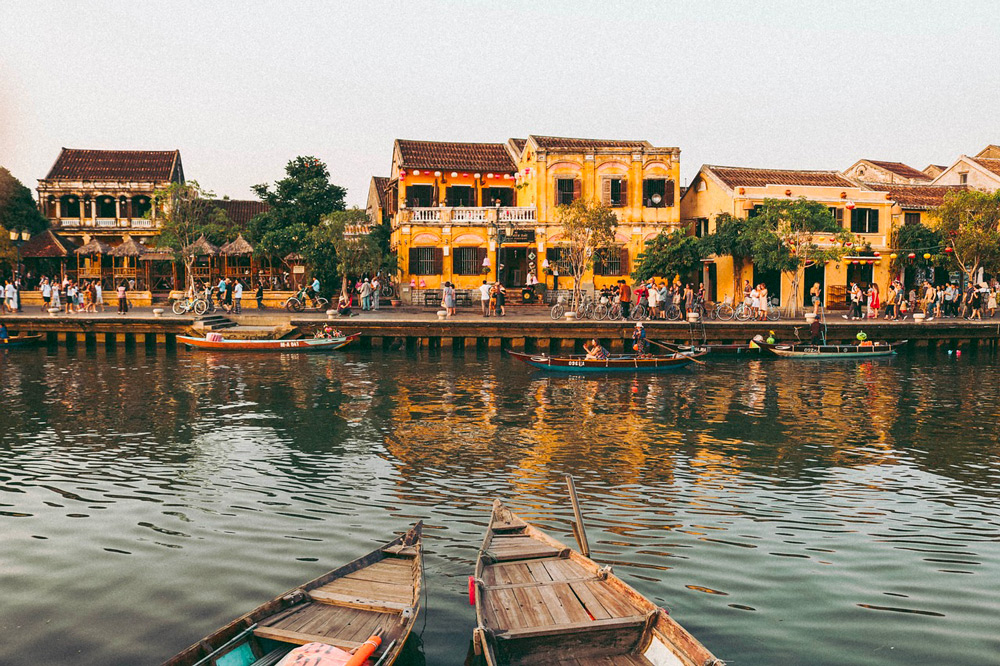
Once you arrive, you’ll notice that the historic center is closed to cars and motorbikes for much of the day. The best way to explore is on foot or by renting a bicycle (only about 20,000 VND). For an extra touch of charm, you can opt for a xich lo (cyclo-pousse). Be sure to negotiate the fare before hopping on!
Hoi An’s Old Town, a UNESCO World Heritage Site, beautifully blends Chinese, Japanese, French, and Vietnamese influences. A 120,000 VND entrance ticket grants access to five historic sites, including ancient houses, temples, and museums. Other places, like art galleries, the Precious Heritage Museum, and the central market, are free to visit. Hiring a local guide is a great way to learn about the rich history and fascinating anecdotes of this vibrant trading town.
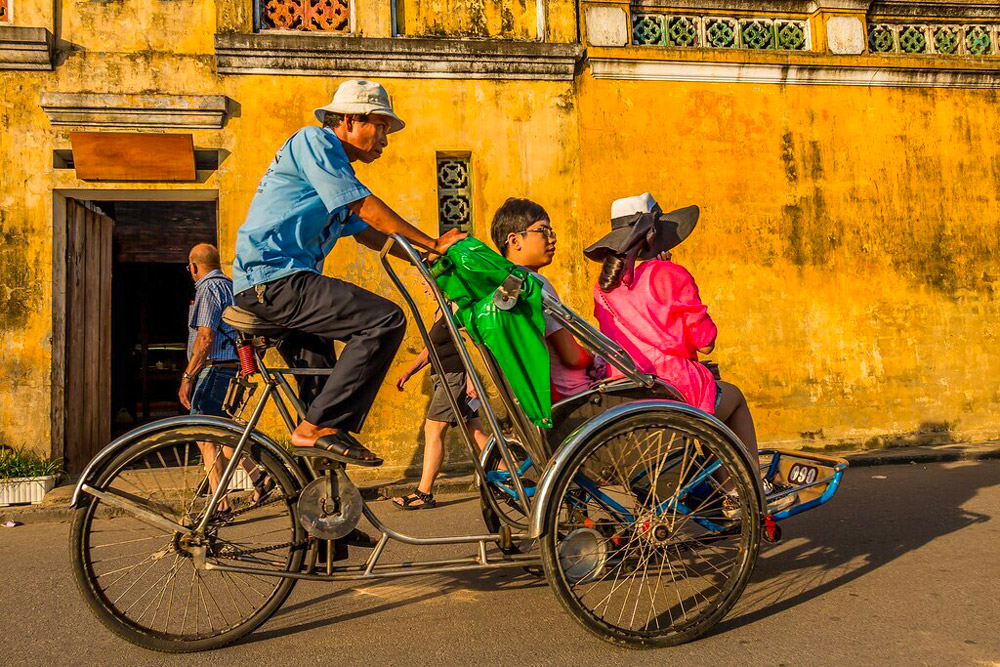
Must-Do Activities in Hoi An
Hoi An is a treasure trove of experiences. Beyond strolling through its picturesque streets, here are some activities not to miss:
- 1. Cooking Classes
- Learn to prepare iconic Vietnamese dishes like cao lầu and banh xeo. You’ll leave with not only a satisfied appetite but also a new skill to take home.
- 2. Craft Workshops
- Hoi An is famous for its colorful lanterns. Join a workshop to create your own handmade lantern, a unique and personal souvenir.
- 3. Traditional Performances
- Included in the Old Town ticket, these shows feature folk dances, traditional music, and ancient instruments. Performances are held several times a day at the House of Traditional Art.
- 4. Food Tours
- For foodies, a guided culinary tour is a must. Discover the best street food vendors and hidden restaurants while sampling authentic Hoi An specialties.
- 5. Boat Rides on the Thu Bon River
- As the sun sets, take a serene boat ride for a new perspective on the town. For those feeling adventurous, explore nearby artisan villages like Tra Que, Thanh Ha, or Cam Thanh.
Read my complete travel guide to Hoi An for more details.
Lunch and Dinner in Hoi An
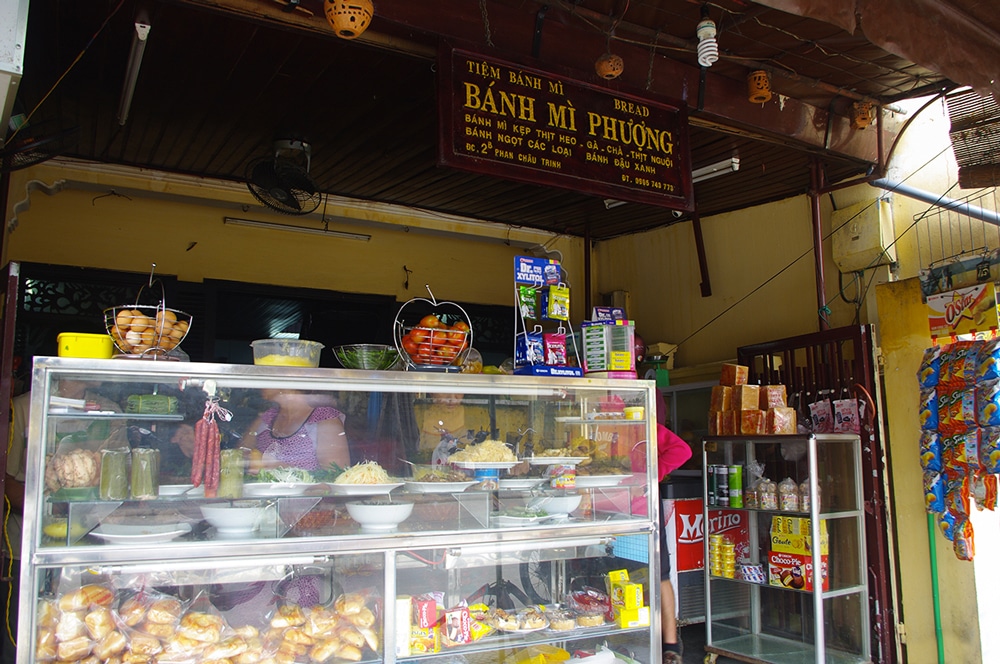
Hoi An offers endless dining options, from street food to fine dining. For a local experience, head to the central market to sample dishes for just a few dong. If you’re craving a famous Vietnamese sandwich, try Banh Mi Phuong, made famous by Anthony Bourdain.
If you’re in the mood for international cuisine, Hoi An has plenty of Indian, Japanese, and European restaurants run by passionate expats.
In the evening, dive into Hoi An’s vibrant street food scene. Don’t miss cao lầu, the town’s signature noodle dish, grilled skewers, or chè, a traditional Vietnamese dessert. There’s no shortage of new flavors to explore!
Hoi An by Night: Lanterns and the Night Market
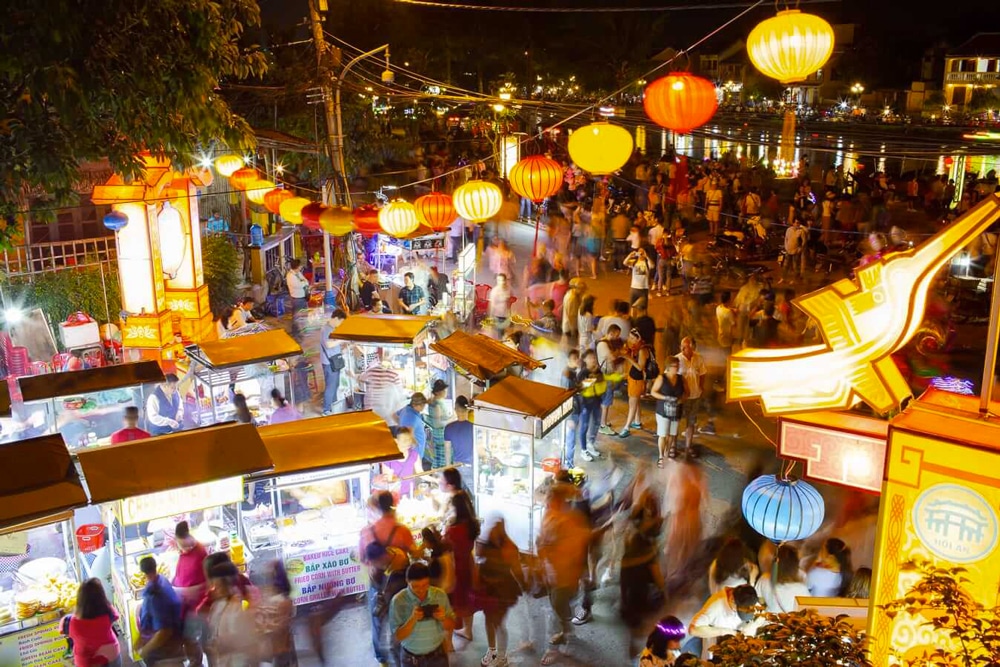
At night, Hoi An transforms into a magical fairy tale with its glowing lanterns and bustling night market. On the 14th day of every lunar month, the town celebrates the Hoi An Lantern Festival (also known as the Full Moon Festival), with thousands of lanterns illuminating the streets, traditional music, and folk games.
For an even more enchanting experience, take a lantern boat ride on the Thu Bon River. Watch locals release candlelit lanterns onto the water, making wishes as they drift away. Across the bridge, the night market offers an array of street food, artisan products, and lively bars with happy hours-perfect for ending your day on a high note.
Optional Beach Visit: An Bang
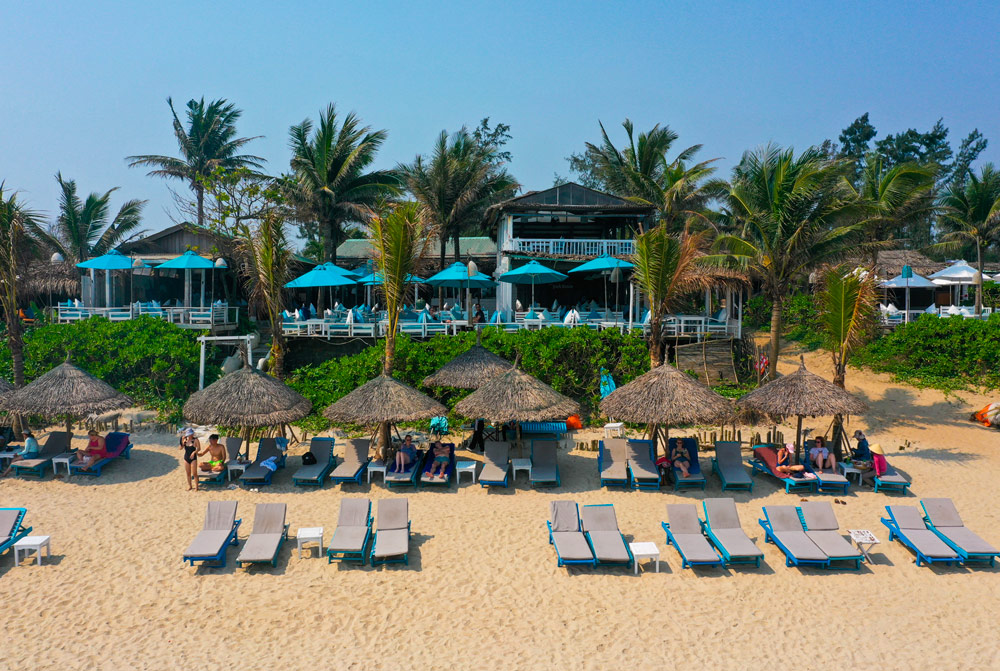
If you’re craving some beach time, An Bang Beach is just 3 kilometers from the Japanese Covered Bridge. Rent a sun lounger or order a drink to enjoy the facilities for free. Relax with the sea breeze and treat yourself to fresh seafood, or even catch a live music event at one of the beachfront venues on selected evenings.
Day 3: A Getaway to Hue from Da Nang
For your third day, I recommend an excursion to Hue, the former imperial capital of Vietnam, located about two hours from Da Nang. If you have an interest in history, architecture, and gastronomy, Hue is a must-visit destination. Here, you’ll discover Vietnam’s last imperial citadel, the tombs of its emperors, and a unique charm along the Perfume River.
Getting to Hue: Hai Van Pass and Lang Co Lagoon
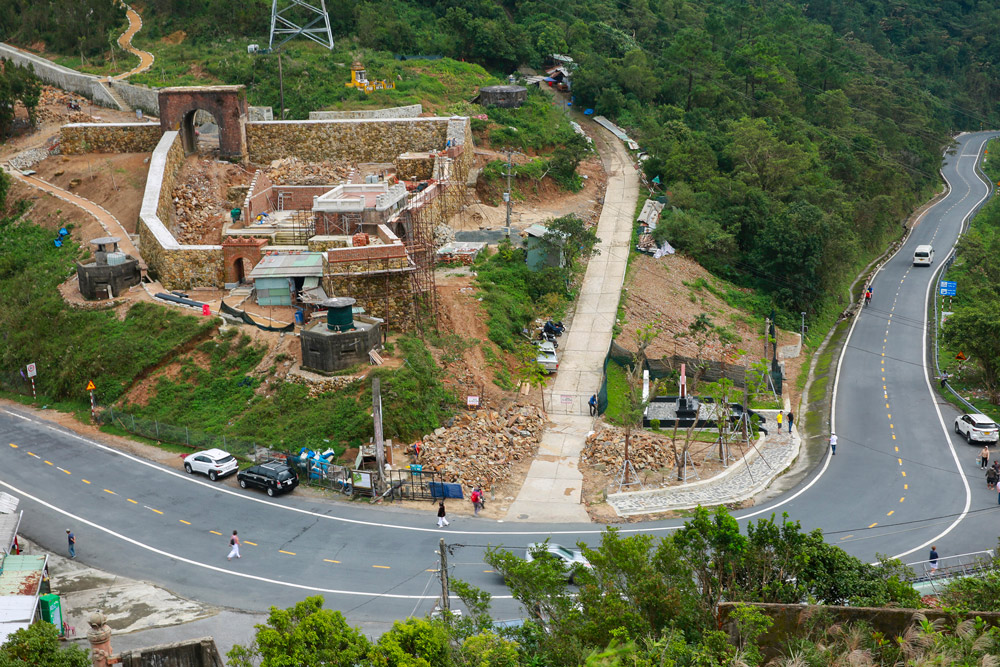
The journey from Da Nang to Hue is an adventure in itself. There are two main routes:
1. Via Hai Van Pass: Known as one of Vietnam’s most scenic routes, this mountain pass offers breathtaking views of the East Sea, lush mountains, and verdant landscapes. While the drive takes a bit longer, the stunning vistas make it well worth the extra time.
2. Through the Hai Van Tunnel: A faster but less picturesque option for those who prefer efficiency over scenery.
If you opt for the Hai Van Pass, consider stopping at Lang Co Lagoon. Famous for its serene beach and calm waters, it’s the perfect spot for a quick photo break or a coffee while admiring the reflection of green hills in the water.
Hue Day Trip: Explore the Imperial City
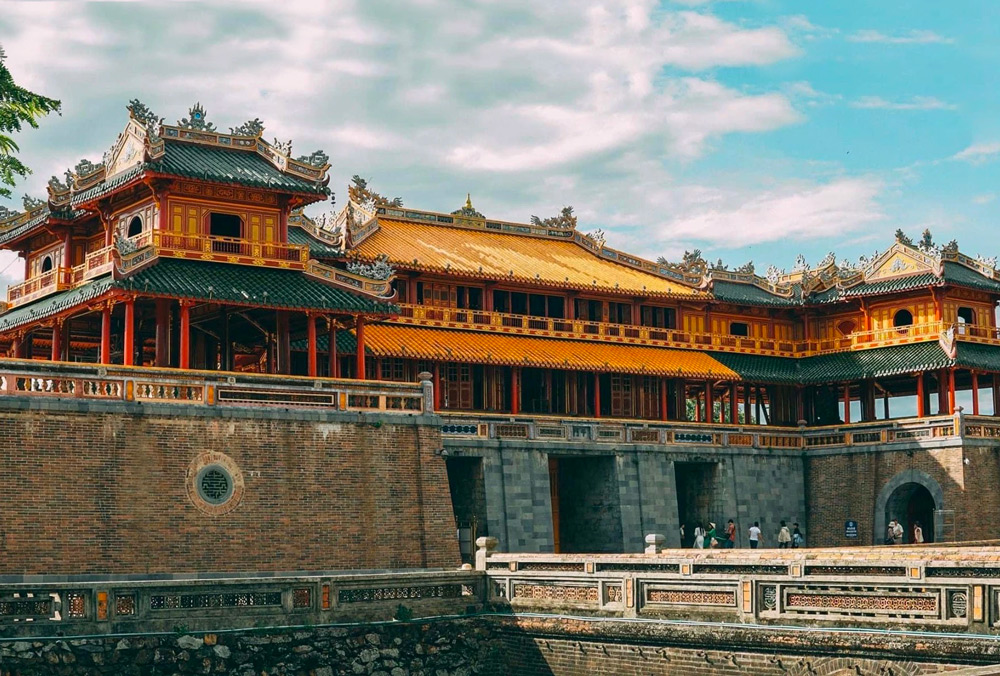
1. Self-Guided Tour
Transport:
- Rent a motorbike if you’re comfortable riding in Vietnam (expect 2-3 hours to reach Hue).
- Take a bus or minivan-more frequent and safer, especially if you’re unfamiliar with the roads.
- Hire a private car or taxi for added comfort and flexibility.
Highlights:
- The Citadel and Forbidden Purple City: Start early to avoid the heat and allow 2-3 hours to fully explore the pavilions, monumental gates, and inner courtyards. The red-and-gold painted corridors are especially photogenic.
- Imperial Tombs: Visit Khai Dinh, Tu Duc, or Minh Mang. Each tomb has a unique style blending Vietnamese and European influences. Take your time to stroll through the gardens and admire the many statues of mandarins, warriors, and mythical animals.
- Thien Mu Pagoda (Heavenly Lady): Founded in the 17th century, this iconic pagoda overlooks the Perfume River and is a must-see symbol of Hue. Don’t miss the octagonal tower and the historic car inside the site (linked to the story of the Venerable Thich Quang Duc).
- Dragon Boat Ride: In the afternoon or at sunset, take a relaxing cruise on the Perfume River. It’s a peaceful and serene experience that contrasts with the city’s bustle.
Cuisine:
- Try Bun Bo Hue, the city’s signature spicy beef noodle soup.
- Sample Hue’s famous bánh bèo, bánh khoái, and nem lui (grilled pork skewers), all staples of imperial cuisine.
- For dessert, enjoy chè Hue, a traditional sweet dish made from beans, fruits, and jellies, which you’ll find on almost every corner.
2. Guided Tour
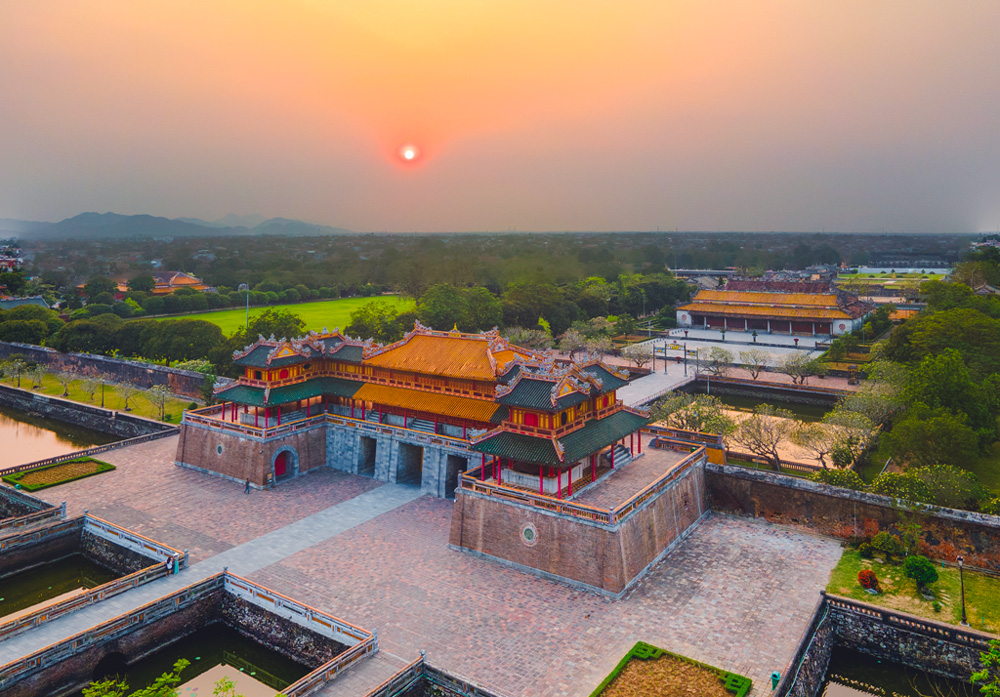
Organization:
Most tours depart early in the morning from Da Nang, often including a stop at the Hai Van Pass and Lang Co Lagoon before heading to Hue.
Typically, the itinerary covers the Citadel, an imperial tomb (often Khai Dinh), and Thien Mu Pagoda. With a knowledgeable guide, you’ll learn about the history of the Nguyen Dynasty and hear fascinating stories about each location.
Lunch is usually included, giving you the chance to enjoy some of Hue’s local specialties. In the afternoon, many tours offer a relaxing Perfume River cruise before returning to Da Nang in the evening.
Advantages:
- Convenience: All logistics are handled, including transport, entry tickets, meals, and historical explanations.
- Expert Insight: A local guide helps you understand the symbolism and legends behind each monument, along with the religious rituals and traditions still practiced today.
Why It’s Worth It
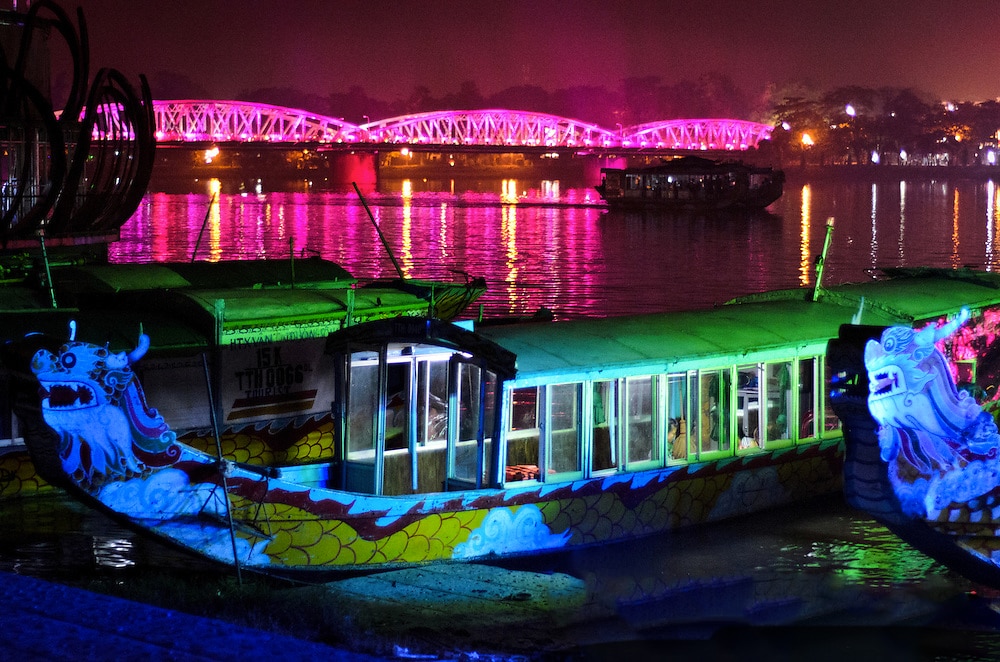
A guided day trip to Hue offers a striking contrast to the modern vibe of Da Nang and the tranquil charm of Hoi An. It’s a chance to delve into Vietnam’s imperial history, walk in the footsteps of the Nguyen emperors, and experience a more serene way of life marked by Buddhist rituals and exquisite cuisine.
The journey itself is also part of the appeal-especially if you take the Hai Van Pass. This scenic route features lush jungle-clad mountains, turquoise seas, and quaint fishing villages. Every twist and turn reveals a new breathtaking panorama.
Practical Recommendations
- Departure Time: Start early, around 7:00–7:30 AM, to reach Hue by late morning. This gives you enough time to explore the Citadel and at least one tomb before lunch.
- Dress Code: As imperial sites and pagodas are places of respect, avoid overly short or revealing clothing. Bring a hat or cap to protect yourself from the sun.
- Weather: Hue is known for its rainy weather, especially from October to December. Check the forecast and bring a lightweight raincoat or umbrella if necessary.
- Budget: Entry tickets (Citadel, tombs) and the Perfume River cruise are reasonably priced, and a combined pass may be available. Factor in additional costs for meals, transportation, and a guide if not included in the tour.
Option 2: Ba Na Hills
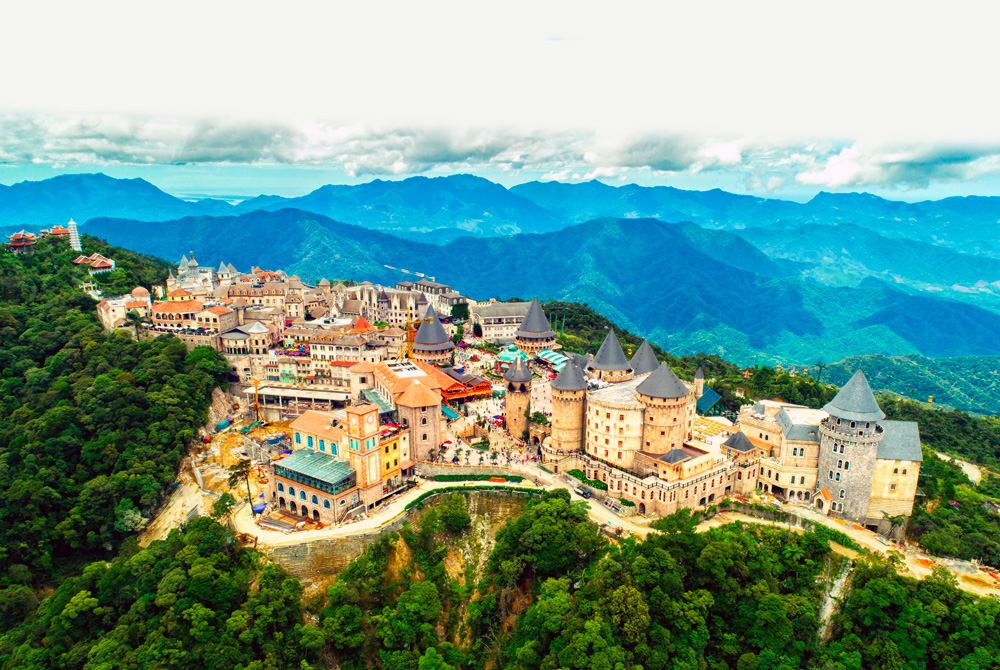
If you’re looking for a lighter, more fun-filled day instead of embarking on an adventure to Hue, Ba Na Hills is an excellent alternative. Located about 40 kilometers from the center of Da Nang, this mountain resort is best known for its cable car-one of the longest in the world-which whisks you to the summit while offering stunning views of the jungle and sea below.
Once at the top, you can wander through a quaint European-style village, savor local or Western delicacies, and, of course, walk across the Golden Bridge. This iconic structure, supported by two giant stone hands, has become one of the region’s most recognizable attractions. The cooler mountain air provides a refreshing escape from the city’s heat, making it particularly enjoyable during summer.
Ba Na Hills also boasts an indoor amusement park, Fantasy Park, offering entertainment for all ages-perfect for rainy days or a break from outdoor activities. With its playful atmosphere and breathtaking views, Ba Na Hills offers a relaxing and unique getaway for those wanting to escape the urban hustle of Da Nang without venturing too far.
Check out my article on Ba Na Hills for more details.
Essential Information
- Price: 950,000 VND per person
- Hours: 7:30 AM – 10:00 PM
My Opinion
After three packed days in Da Nang, you’ll leave with a head full of unforgettable memories: golden beaches, the majestic Lady Buddha, the timeless charm of Hoi An glowing with lanterns, and the imperial splendor of Hue-or, for those who choose it, the refreshing and whimsical experience of Ba Na Hills.
From cultural discoveries to the delights of local cuisine-whether it’s mi Quang, bun cha ca, or fresh seafood-this vibrant region truly has something for everyone. If this short stay has piqued your curiosity, rest assured that Da Nang and its surroundings hold many more treasures waiting to be explored on your next visit.

